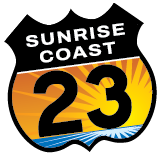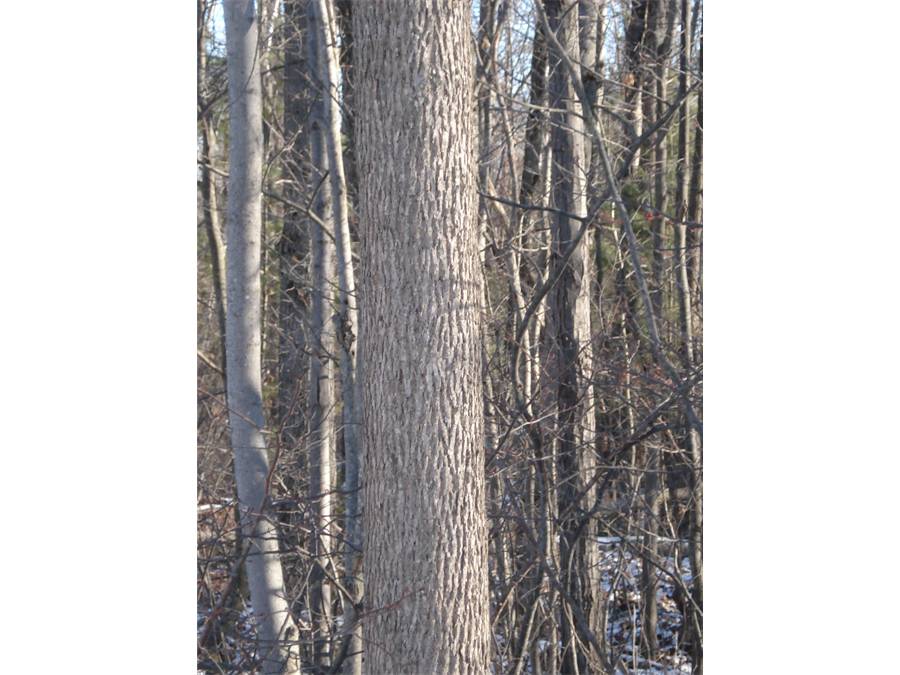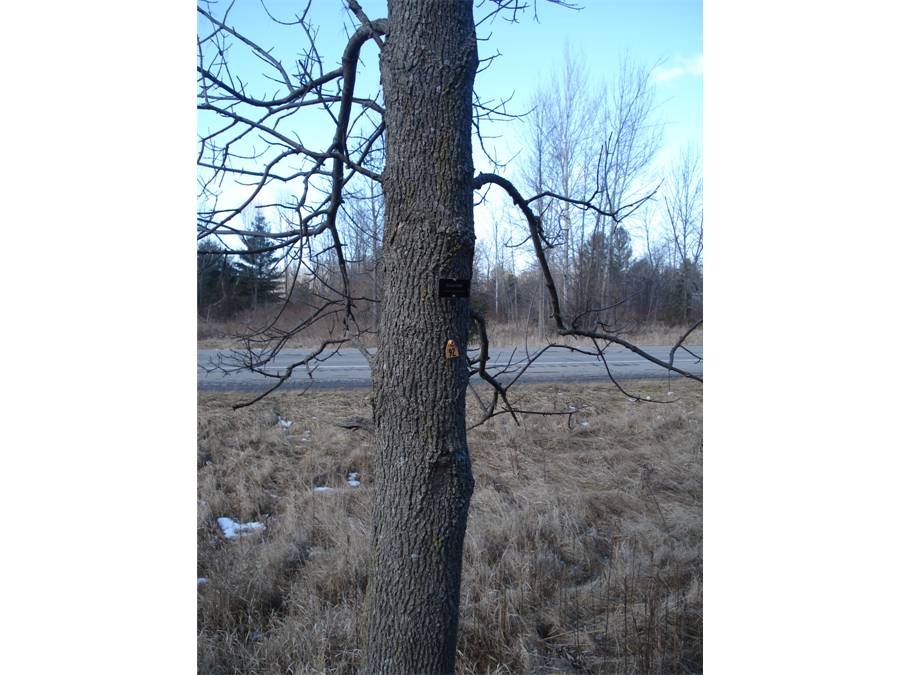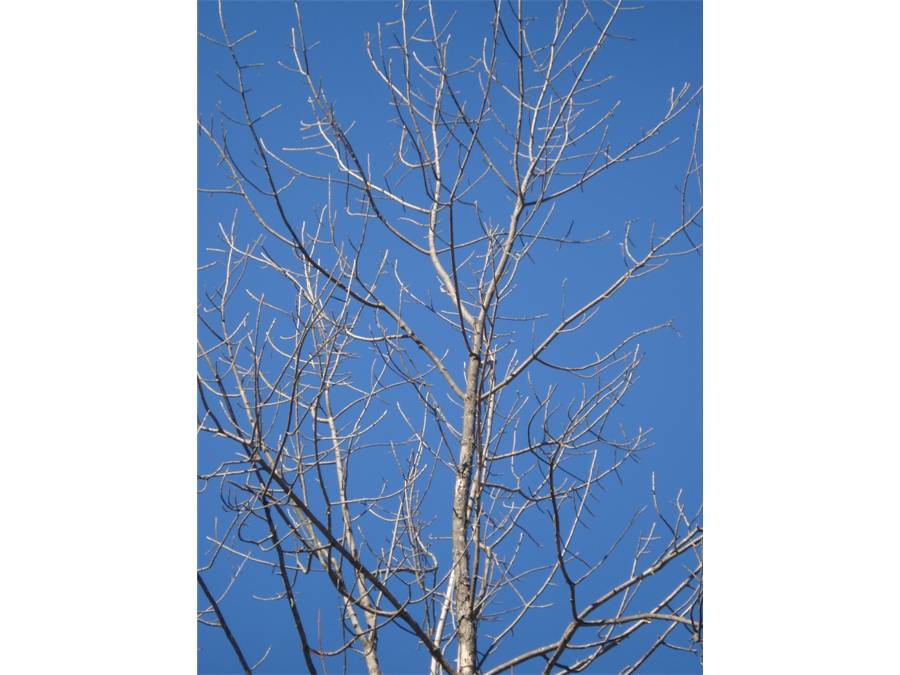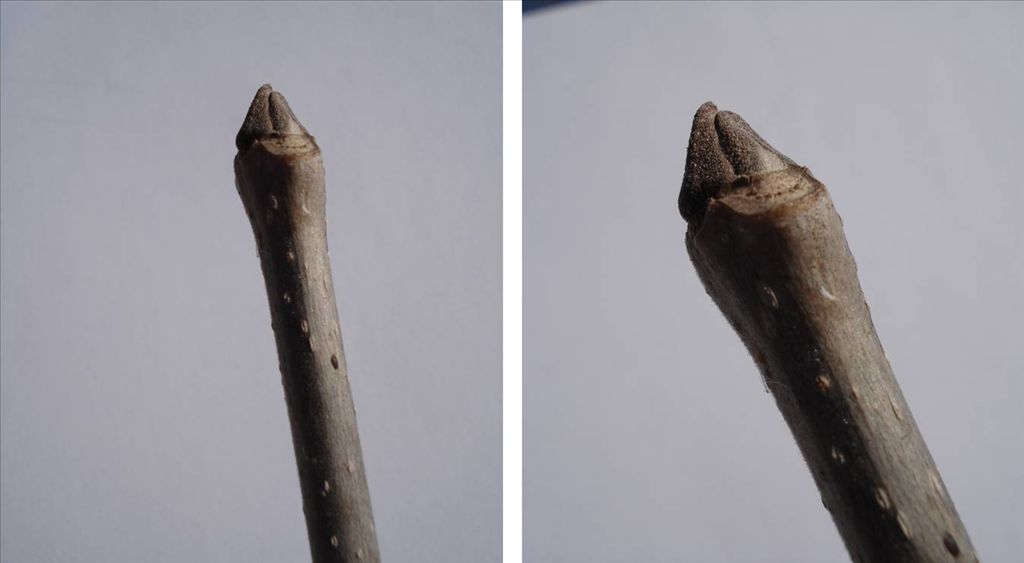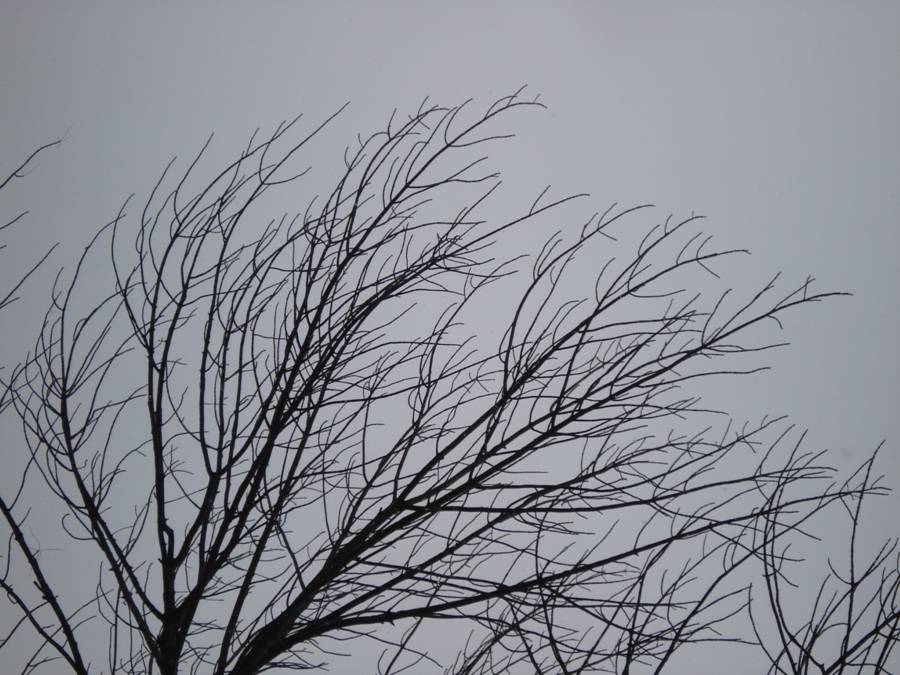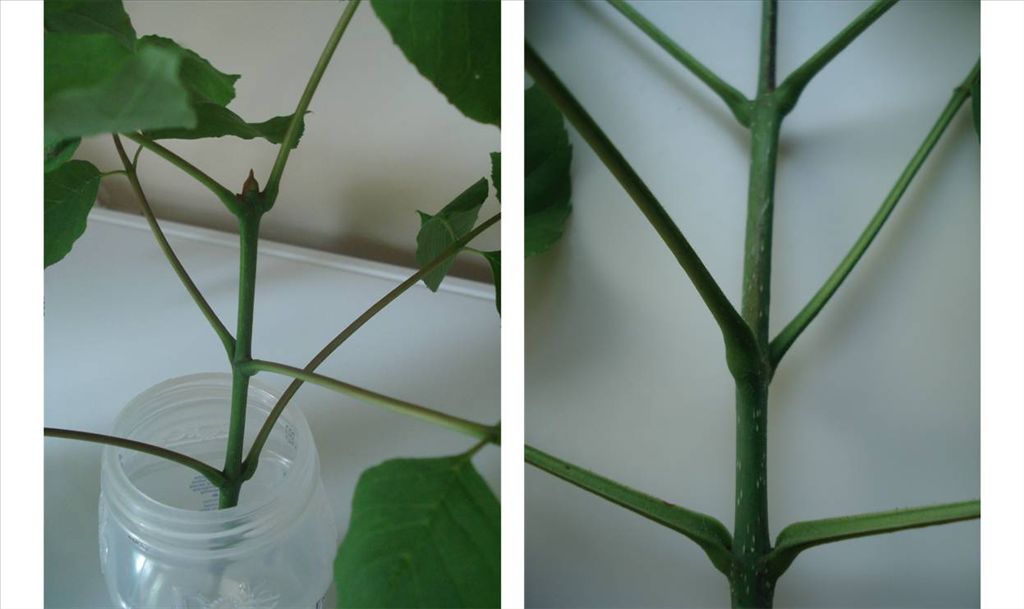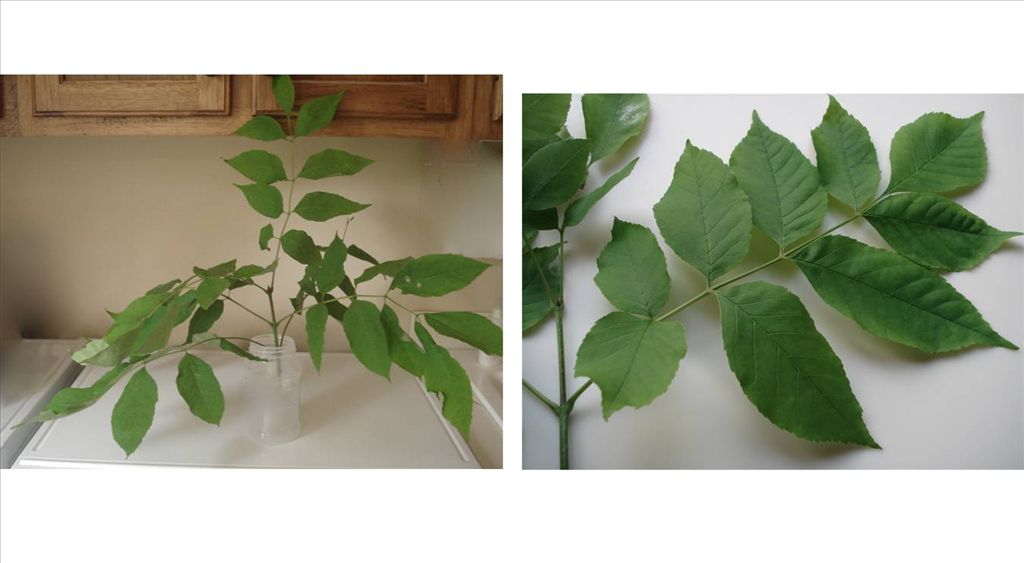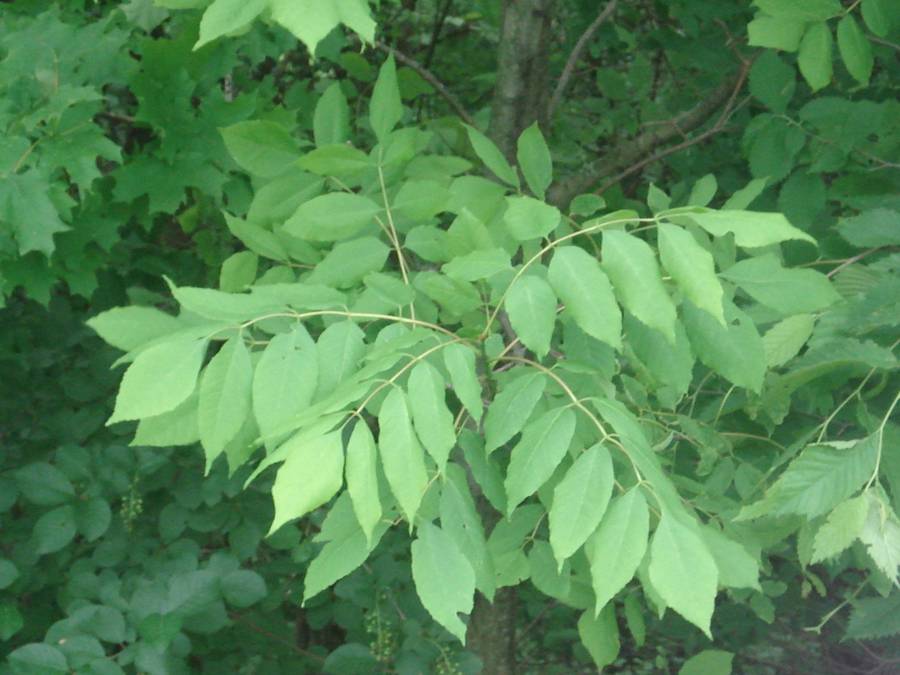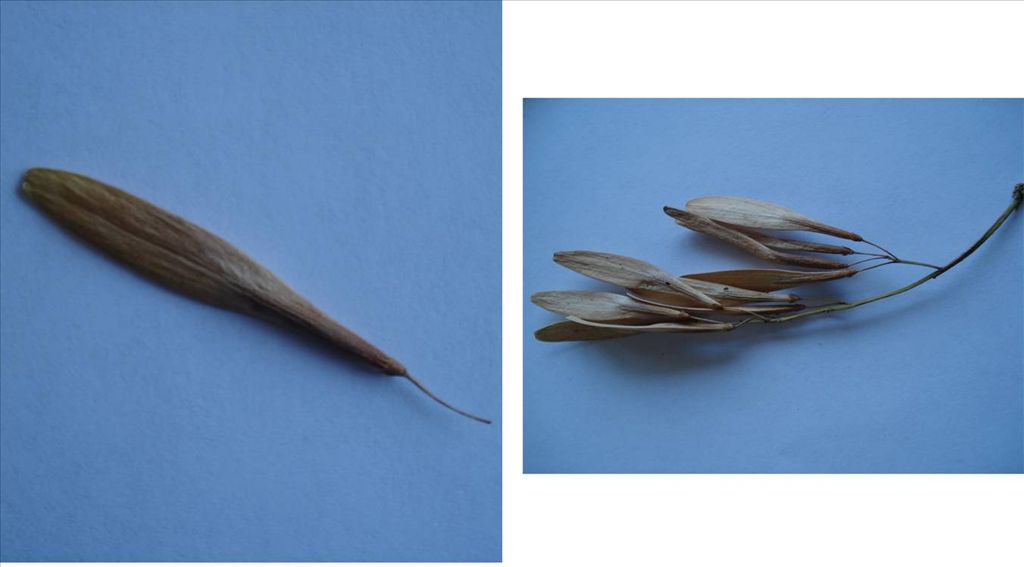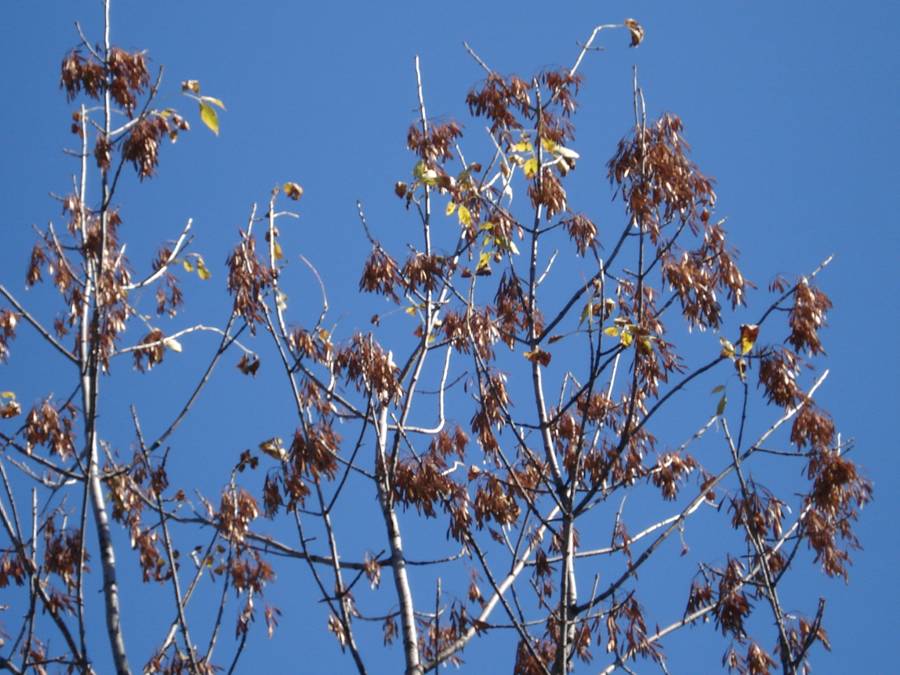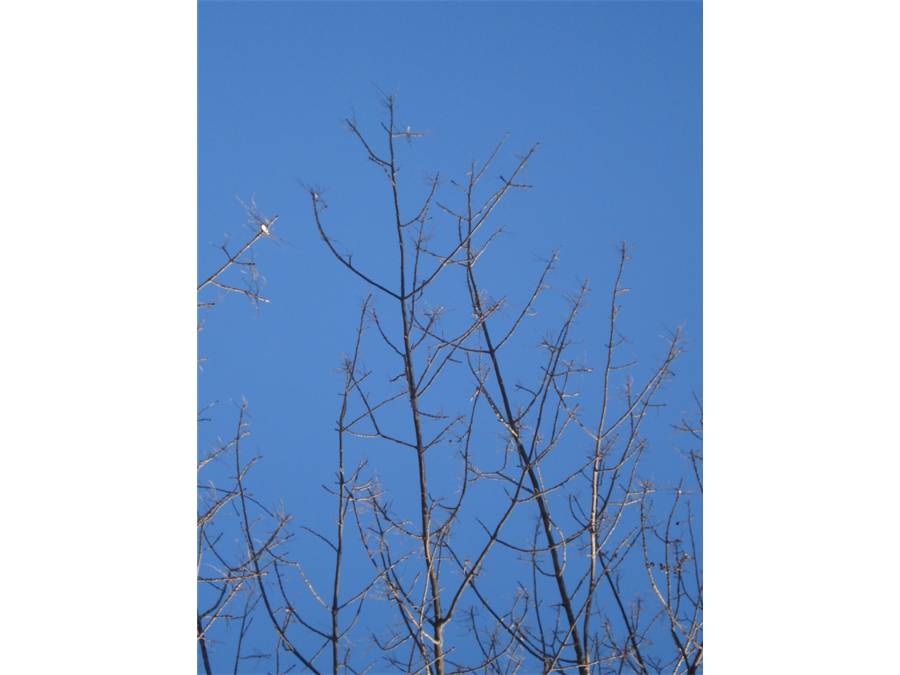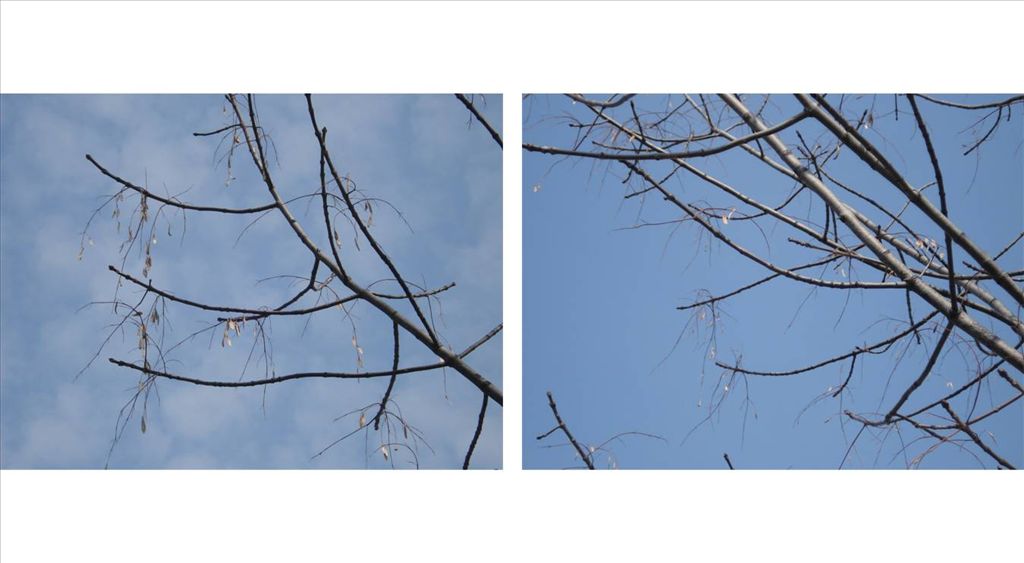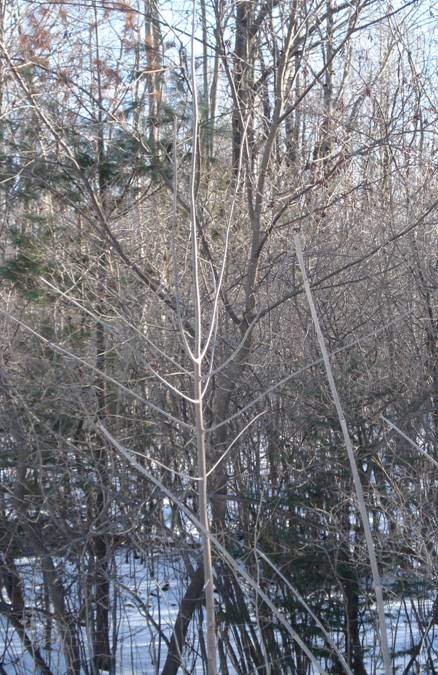•Bark appearance of corrugated "Y's" (Fig. 1)
•Lower branches often droop downwards. (Fig. 2)
•Bare branches look "messy" (takes practice to discern) (Fig. 3)
•Terminal buds are distinctive and are an identifying feature in winter and spring (Fig. 4)
•Twigs with opposite pattern of buds / leaves / branching (very easy to see on young trees (Fig. 5). On older trees, some branches break off or are oriented so that you only see one, giving an alternate appearance - look carefully for opposite branching on older trees (Fig. 6)
•The opposite branches are "long-ish" and often curve towards the tip of the branch. (Fig. 6)
•Leaves are compound. i.e. with several leaflets arising from one petiole off the twig. (Fig. 7, 8, 9)
•Ash are the only trees with opposite, compound leaves on ABP(except 1 Box Elder)
•Fruit: single samara (seed with a "wing") (Fig. 10); clusters (panicles) of samaras (Fig. 10 and 11)
•In winter, clusters of the small stalks of the samaras, sometimes with a few samaras, can remain high in the trees and are visible from the ground. (Fig. 12 and 13)
• Most ash on ABP-NTA are Green Ash.
•Ashes are dioecious (the male and female flowers are on separate trees), although this is not obvious to the casual observer
•Susceptible to Emerald Ash Borer
•Historical uses: (confused with White Ash); wood ashes provide potash; baseball bats, tennis racquets; tool handles, canoe paddles
This information is basic (not overly technical) by design and does not include total botanical information about each species (kind of tree). Rather, only distinctive features of each numbered tree in the Alabaster Bike Path-Native Tree Arboretum (ABP-NTA) are listed. Because all natural populations have variation, when considering these trees, look at as many examples of each characteristic as possible, i.e. several leaves or fruits or branching points, etc. Finally, when studying trees, the identifying “keys” are always written for a given geographic area to include ONLY ALL the trees in that area. Because our “area” is (the numbered trees in) the ABP-NTA, this information applies only to the numbered trees along the ABP-NTA; it may or may not work in neighboring areas with even a slightly different species composition. All photos and text by sczaika. Historical uses from Hough, R.B. The Wood Book. Royal Botanical Gardens; Kershaw, L. Trees of Michigan.
